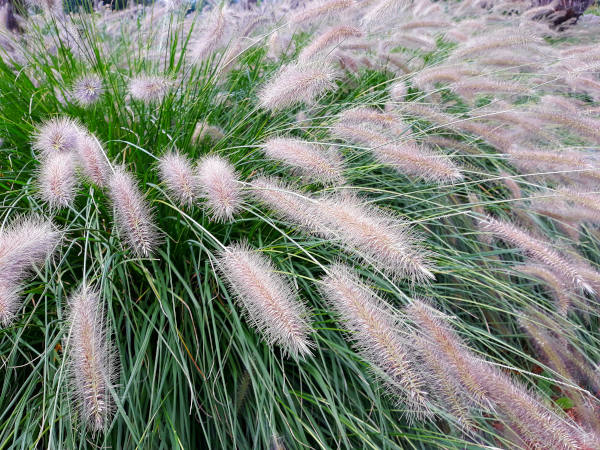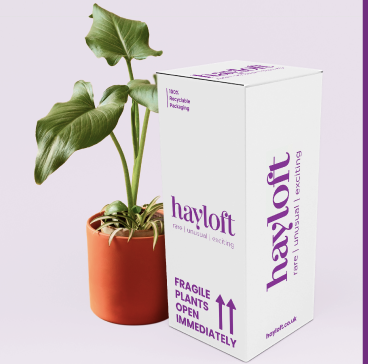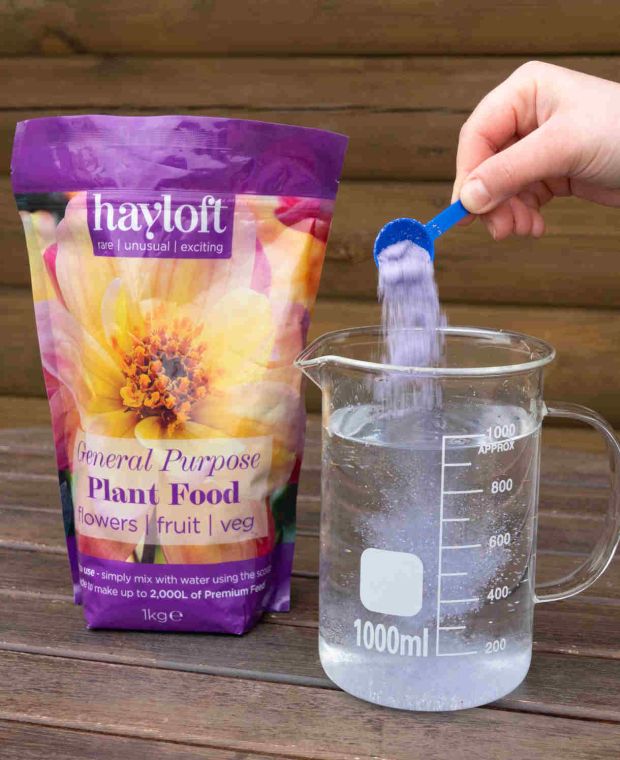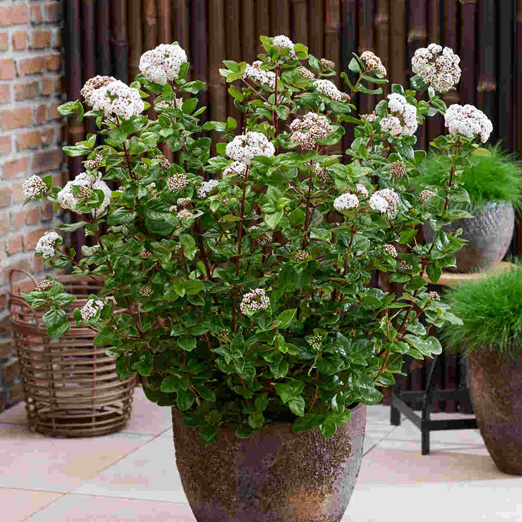How to grow Pennisetum
Pennisetum is a genus of around 80 grass species, many of which are grown ornamentally for their feathery bottlebrush flower spikes during summer and autumn. They form neat tussocks of foliage of evergreen or deciduous foliage, both of which continue to look good over winter (the deciduous foliage turns a pleasant shade of brown and remains in place). Good autumn colour also tends to feature on deciduous species. The flowers and seedheads are useful in both dried and fresh arrangements, and the latter catch the frost beautifully when left on the plant throughout winter.
Pennisetum is also known by the common name of fountain grass.
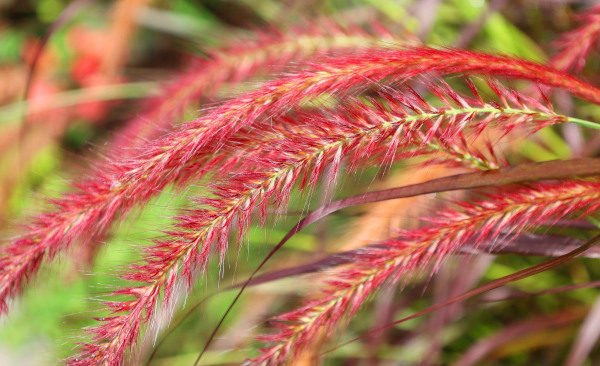
Zantedeschia is a genus of flowering plants from the family Araceae and is native to southern Africa. With a rich history dating back to the Ancient Romans, these deciduous or semi-evergreen perennials have been used as a symbol of celebration. Zantedeschia was Named after Professor Giovanni Zantedeschia, an Italian botanist.
There are two main forms of Zantedeschia: hardy and tender. Hardy forms of the plant can be grown outdoors, enjoy moist soil and full sun or partially shaded conditions - these are known as Arum lilies. Tender forms of Zantedeschia prefer being grown in containers or pots and should be brought inside over the winter - these are known as Calla lilies.
With tuberous flora in all colours from whites, yellows and oranges to deep reds and purples, Zantedeschias are not to be overlooked in any garden, as long as they have sufficient sunlight to grow in.
Ready to learn more about growing Zantedeschia? Read on for all there is to know...
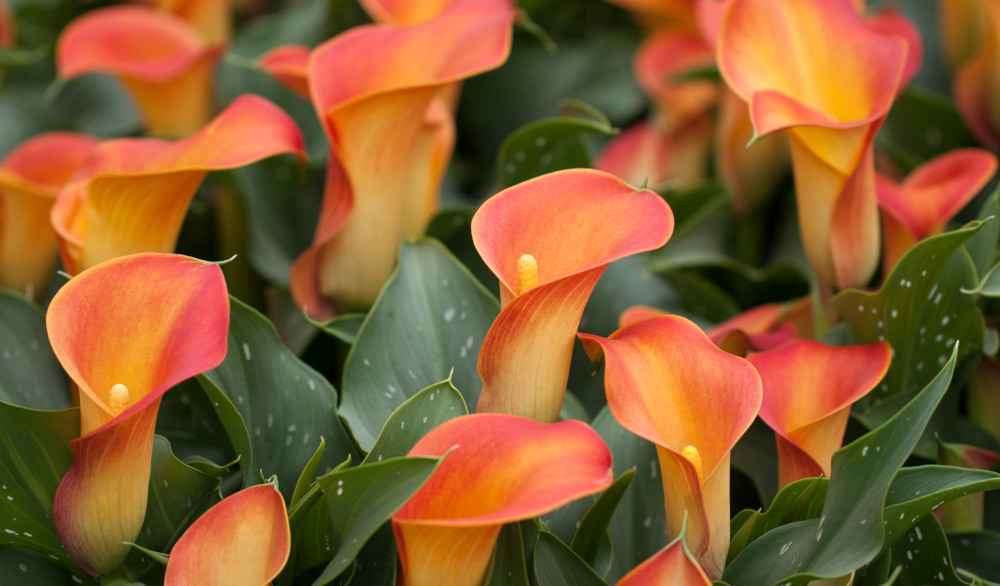
Key Information
Soil pH
Position
Hardiness

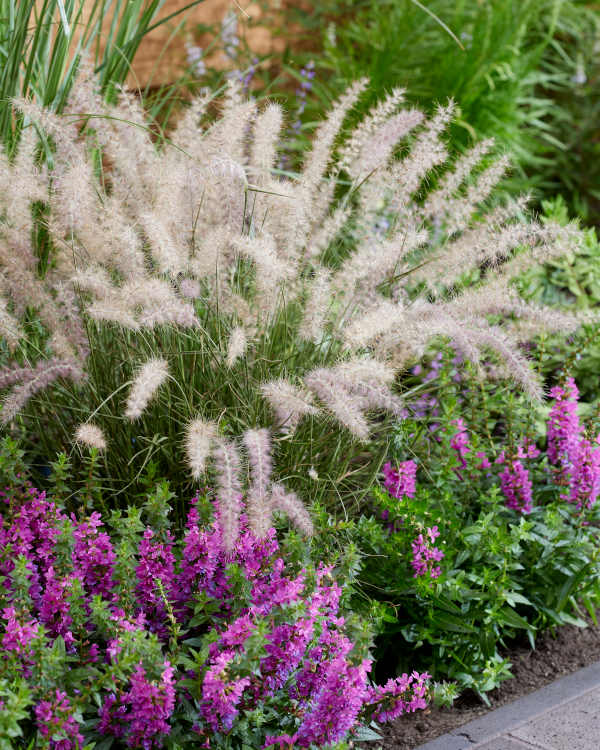
Where & when to plant Pennisetum
Position - A warm, sunny spot
Soil - Light, moderately fertile, drains easily
Flowering Period - Summer and autumn
Hardiness - Can be half-hardy or hardy depending on the species
For best results plant pennisetum in spring, as even the hardy varieties fare better over winter with a season’s worth of growth under their belt.
Choose a sunny, warm spot, avoiding exposed or excessively wet conditions. Smaller pennisetum are often planted in drifts, while the larger, bolder species (such as Pennisetum setaceum ‘Rubrum’, Pennisetum alopecuroides ‘Black Beauty’, and Pennisetum alopecuroides ‘Hameln’) can stand alone.
Pennisetum is suitable for both borders and containers. It dislikes being pot bound (i.e., kept in a container it has outgrown), so regular repotting is necessary to ensure good health.
How to plant Pennisetum
In the ground
- Clear the chosen area of weeds.
- Dig a planting hole several times larger than the root ball, mixing in plenty of well-rotted organic matter. If your soil is a little on the heavy side, now is the time to apply a generous amount of horticultural grit.
- Place the plant in the hole, ensuring the top of the root ball sits level with the surface of the soil. Too low and the plant may rot, too high and the roots can dry out.
- Backfill with soil and firm in gently.
- Soak well with water.
- Mulch around the base with well-rotted organic matter.
In a container
- Choose an appropriate container, ensuring there are plenty of drainage holes.
- It can be worth potting up large containers in situ to save yourself the trouble of moving once full.
- Use a good quality potting compost with plenty of horticultural grit mixed in, and, if not already present in the compost (check the description on the bag) some slow-release plant food.
- Start by partially filling the pot with compost; enough so that when placed on it the upper surface of the root ball is about 3cm lower than the top of the pot.
- Infill all the space surrounding the root ball with compost, firming down with your fingers then adding a little more so the plant is held tight.
- Pick up the pot (if you can!) and lightly tap on the potting bench or ground a few times to help further settle the compost around the plant.
- Soak well with water.
- A mulch with horticultural grit will look attractive and help to prevent a ‘cap’ or crust forming on the top of the compost (something container plants can suffer due to the artificial nature of their watering).
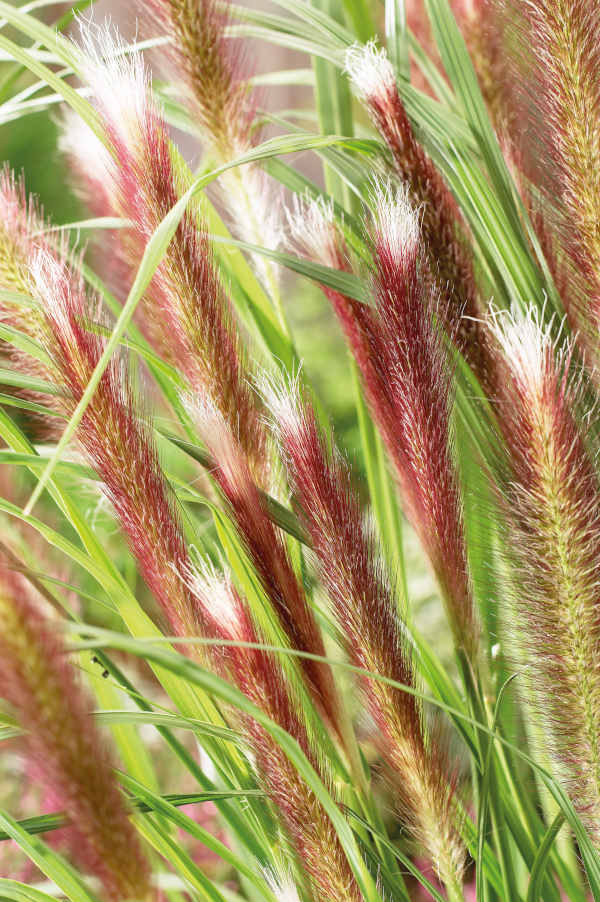
What to plant with Pennisetum
Like most ornamental grasses, pennisetum fits well in a naturalistic planting style alongside late-summer perennials such as helenium, aster, rudbeckia, echinacea, and Japanese anemone. A variety of other grasses will add further depth and texture. For this we love stipa, panicum, and miscanthus.
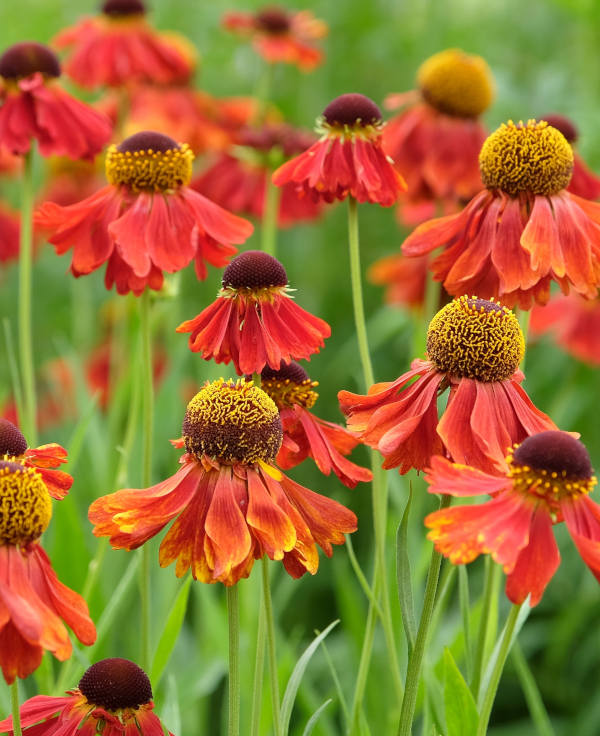
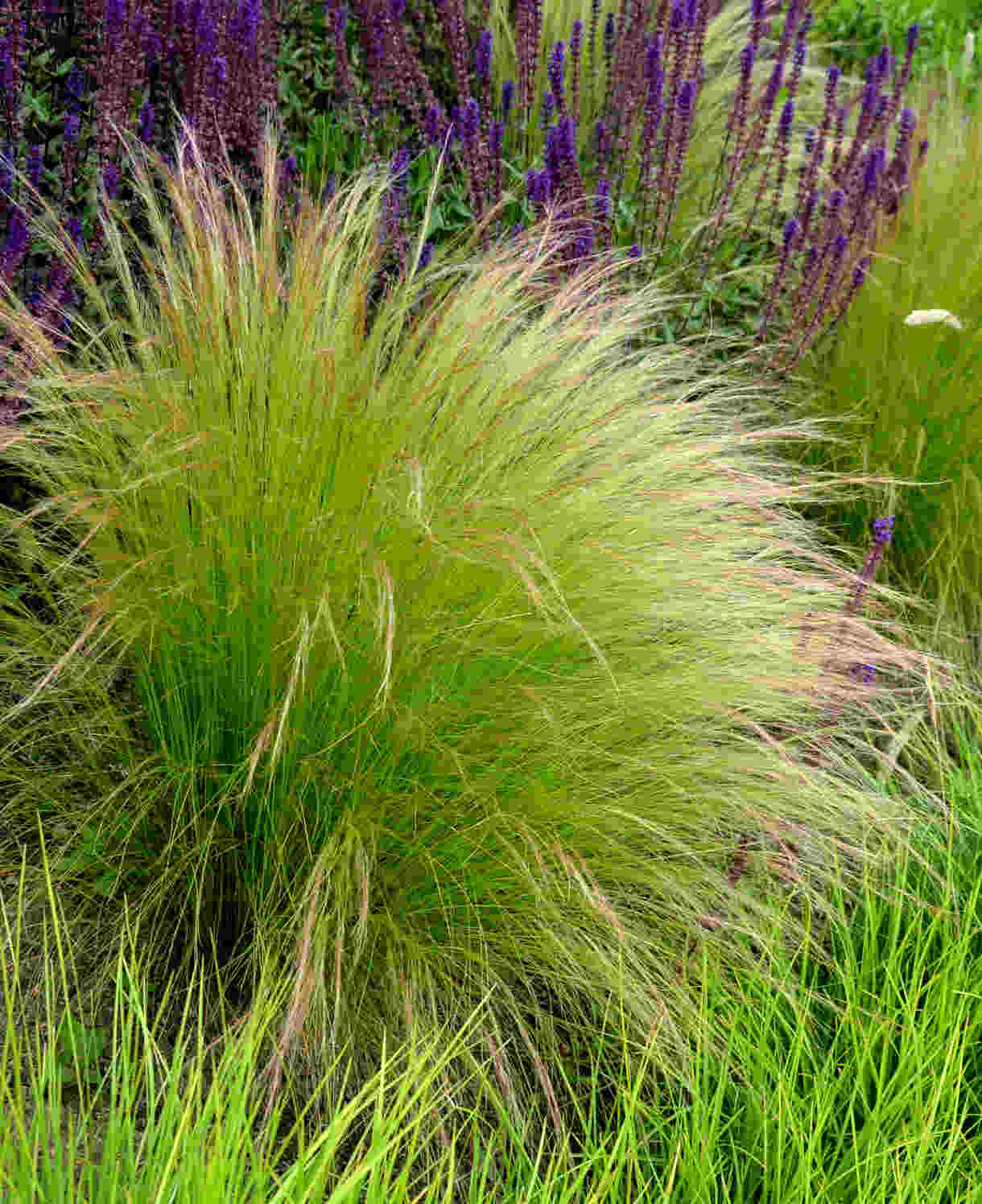
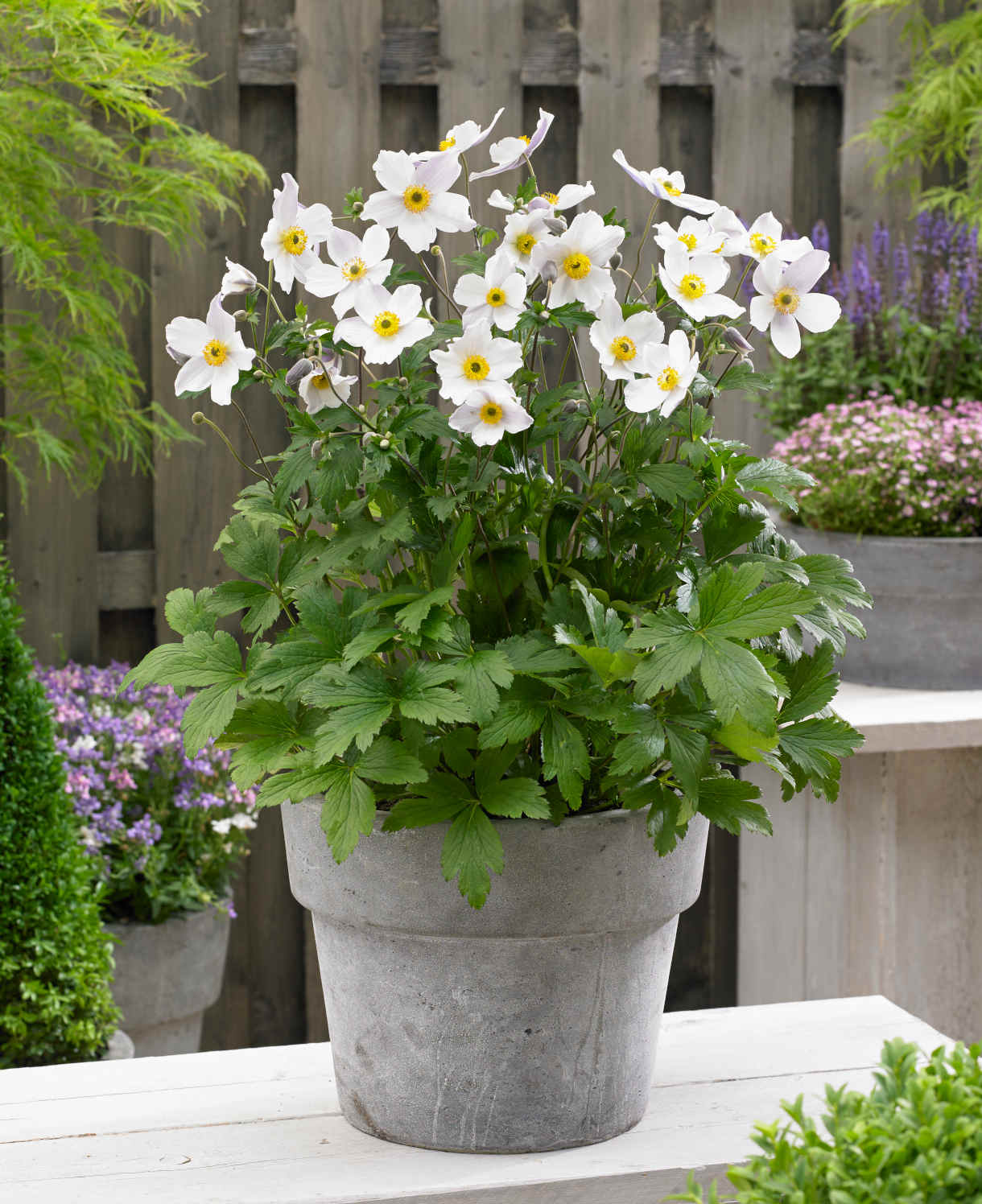
How to care for Pennisetum
Pruning and Deadheading
Evergreen species require little pruning other than the removal of dead flowering stems in spring (left on over winter they provide an attractive feature, particularly in the frost).
Deciduous species should be pruned in early spring. Cut all foliage and flowering stems back leaving around 20cm (pennisetum resents being pruned right down to the ground).
Watering
Water until established and then in very dry periods thereafter.
Container-grown pennisetum should be watered regularly throughout the growing season, though will tolerate the odd missed watering.
Cold Protection
The key to helping pennisetum get through the winter is to choose a well-draining, sunny spot, in which case we have found even the half-hardy species seem to come through well. Frost pockets or anywhere liable to sit damp overwinter are likely to spell the end, even for hardier species.
Move container-grown pennisetum to a frost-free environment for the winter months. An unheated greenhouse or conservatory are ideal.
Pests and Diseases
Pennisetum tends to be trouble free in this respect.
How to propagate Pennisetum
The quickest and most reliable way of propagating pennisetum is to divide established clumps in spring. As well as providing new plants, this also maintains the health and vigour of existing specimens.
- Choose a day when the soil is not frozen or waterlogged.
- Dig the plant out of the ground.
- Shake off any excess soil.
- Separate the plant into sections using either swift, cutting blows with a sharp spade, or two forks inserted back-to-back with tines touching, handles then pushed together to prise the plant apart.
- Discard old, damaged, or surplus pieces, keeping healthy, vigorous material.
- Replant decent-sized pieces where desired, and any smaller bits can be potted up.
- Water well until fully established.
Common Pennisetum questions
Does pennisetum spread?
Many of the popular pennisetum cultivars grown by gardeners are sterile, meaning they are unable to self-seed. There may be some gentle spreading via underground rhizomes, though this is easily kept in check if necessary.
Is pennisetum hardy?
Pennisetum can be half-hardy or hardy, depending on the species. Read our ‘Cold Protection’ section above for our experience of growing this ornamental grass.
How big does pennisetum grow?
This can vary depending on the species or cultivar. Our smallest pennisetum reaches just 30cm in height, whereas we have several others which grow to 1.5m. Check individual descriptions for details.
Does pennisetum come back every year?
Given the right conditions, all our pennisetum are perennial, meaning they live for several years.
